Mixed Feelings at the Hagia Sophia
Reflections on an Unholy Marriage
In the last post I mentioned that I had some mixed feelings after visiting the Hagia Sophia, even though I had wanted to visit it for decades. Don’t get me wrong; It was amazing seeing it in person, and I am beyond grateful to touch its stones and wonder at the massive mosaics. But the emotions it evoked surprised me, for wonder was mixed with sadness.
To describe why I will need to describe briefly the place and history of this great building and the city of Istanbul itself.
The Hagia Sophia (the name means Holy Wisdom in Greek) was the greatest Christian church for many long centuries. Finished in 537 under the direction of the Emperor Justinian, it contained the largest interior space in the world, and employed the first full dome of its type. It was the largest church in the world for almost a thousand years, and is now a UNESCO World Heritage Site.
More interesting than its place in architecture, however, is its place in history; Indeed, the history of the Hagia Sophia is a mirror of the history of the western world itself.
The Hagia sits in the center of the old city section of what is now called Istanbul. But of course, the city did not always have this name. It was called Byzantium in ancient times. It came to be called Constantinople after the Roman Emperor Constantine, in one of the most important acts in history, converted first himself and then the empire from pagan to Christian and then decided to make Byzantium his new capitol (instead of Rome). The renamed city quickly became not only the center of the Roman Empire but also the center of Christianity, for the empire and the church were now wed.
A century and a half later the emperor Justinian commissioned the building of the Hagia Sophia as a temple suited to the power and prestige suitable to the center of the church and empire. It’s size and grandeur were unmatched for many centuries. Early in the 10th century, the pagan ruler of the Kievan Rus’ sent emissaries to his neighbors to learn about Judaism, Islam, and Roman and Orthodox Christianity. After visiting Hagia Sophia his emissaries reported back: “We were led into a place where they serve their God, and we did not know where we were, in heaven or on earth.”
For the next 8oo years almost all Emperors of the eastern Roman empire were crowned at the Hagia Sophia.
From the 6th through 12th centuries the history of the church was dominated by the increasing division between the western church, headquartered in Rome and speaking Latin, and the Eastern Church, headquartered in Constantinople and speaking Greek. In 1064 the Pope’s envoy entered the Hagia Sophia and placed a papal bull (legal document) on the altar, which excommunicated the leader of the Eastern Church and his followers. The division was as much geo-political as it was theological, and when Venetians from the fourth crusade attacked Constantinople in 1204 and desecrated the Hagia Sophia the breach in the church became irreparable.
In the background to all this internal division was an ever-growing external threat: the armies of Islam. Muslim armies had spent the last several centuries conquering Christian lands. In the east, Constantinople resisted the wave of conquest. Its size, wealth and strategic position made it the ultimate prize.
Muslim forces first besieged the city in 674 and finally conquered it in 1453, meaning the attempts spanned almost 780 years and included at least ten major seizes.
The conquest was brutal, even by the standards of the time. The Hagia Sophia was a refuge for the population during the city’s capture. The conquering Muslim ruler, Mehmed the 2nd, allowed three days of pillage, and churches around the city were destroyed. The Hagia Sophia was looted. While most of the elderly and infirm were murdered, the remaining were sold into slavery in the Ottoman Empire. Historians differ about the number, but all agree that tens of thousands were murdered and many more tens of thousands were enslaved.
The Hagia Sophia, along with the other churches, was made into a mosque, and its glorious mosaics covered or destroyed.
Some people will no doubt point out that the Crusaders did horrible things as well. Which is true. But then again there are two key differences.
First, by the time the crusades began approximately 80 percent of Christian lands had been conquered by Muslim armies. Imagine a foreign culture that had conquered all of the United States except New England and you may have a certain sympathy for the Christian leaders of the time.
Second, the crusades are now almost universally decried by Christians as a betrayal of the teachings of Christ and a low point of the church’s history. But if you go to Istanbul on the anniversary of the fall of Constantinople (now Istanbul) you will find a quite different sentiment. The conquest of Istanbul is one of the proudest, if not the proudest, moments of Turkish history. On the anniversary, a replica of the Janissary (Ottoman soldiers) marching band performs as many onlookers are moved to tears. It was the Ottoman’s empire’s finest moment, opening the way to attack Europe. As the Poles and Hungarians would attest, the following centuries would be one of hardships and war as Muslim armies attacked as far as Vienna.
So, obviously one source of my mixed emotions while at the Hagia Sophia is seeing this glorious church forcibly converted into a mosque, visualizing the fearful Christians trapped into the sanctuary as Turkish armies began battering the door with a ram (as happened). It is not hard to view the forced conversion of the Hagia Sophia as emblematic of the forced conversion of so, so many Christian cities and peoples. I realize I am biased in this, of course, as a Christian. But it is a bias I cannot shed and have no desire to.
But another source of my diffidence is this: I have such great mixed feelings about the idea of Christendom itself. And the Hagia Sophia and Saint Peter’s Basilica in Rome, are the twin towers of Christendom.
By Christendom I do not mean Christianity or the teaching of Jesus. Rather I mean the combination of Christianity with the power of the state, whether that state is headquartered in Rome, Constantinople, London, or Washington. Christendom is the marriage of the teachings of Jesus with the power of the government. And, to me, it is an unholy marriage, no matter how fortunate it seems to some.
It is this marriage which has produced the bastard-children called the crusades, the inquisitions, the heresy trials, and a thousand lesser-known evil offspring. It is the marriage of church and power which has led so many Christian leaders to abuse power in the name of the church. True, Christendom has not produced the greatest evils in the world. These things would have likely taken a different form, and Christendom at its worst cannot hold a candle to, for example, communism. But Christendom certainly has produced the greatest evils in the history of the church.
As I say, my feelings are a mix, for without Christendom the beautiful Cathedrals I admire so much would likely not exist. Without Christendom it is difficult to see how the works of most of the great artists of the western world before, say, 1600, would have been produced. Would Michelangelo have crafted the transcendent into stone and paint if not for the backing of a Pope?
And again, it is also difficult to foresee how the conquest of Islamic armies would have been stayed if not for competing armies equally dedicated to the divine. Perhaps without Christendom there would be precious few Christians today.
Perhaps.
But perhaps not.
After all, are political and martial powers the only forces at play? Are not spiritual forces capable of protecting humans and guiding human history? Is prayer really less powerful than gunpowder? Who can say for certain that unless the church had taken the crown of empire that the gospel of Jesus would have suffered?
Perhaps I am wrong, and my ignorance matched only by my naivete. That is possible. Certainly I am out of step with so many of my fellow-believers who increasingly seek to wrap the flag around the cross.
But to me the cross represents something that, if not opposite to flag waving, is at least at counter-purpose to it. The cross symbolizes the humility of the very Son of God, who disdained worldly power, and, indeed, was crucified on that cross by the powers of this world. It is hard to me to reconcile that next to the altar of the Hagia Sophia, the altar containing the signs of the broken body and spilled blood of Jesus, was the spot where earthly emperors were crowned and exalted.
These were my restless thoughts as I looked down into this great building. My eyes were dazzled by the size and grandeur of a building: “Imagine this built in the 6th century.” I am grateful to have touched its walls and gazed at its massive golden mosaics. But I look forward all the more to the Day when the Emperor has nail-pierced hands, and the glory of His realm is not seen in marble and gold, but in truth, righteousness and justice.
Come quickly, Lord Jesus.


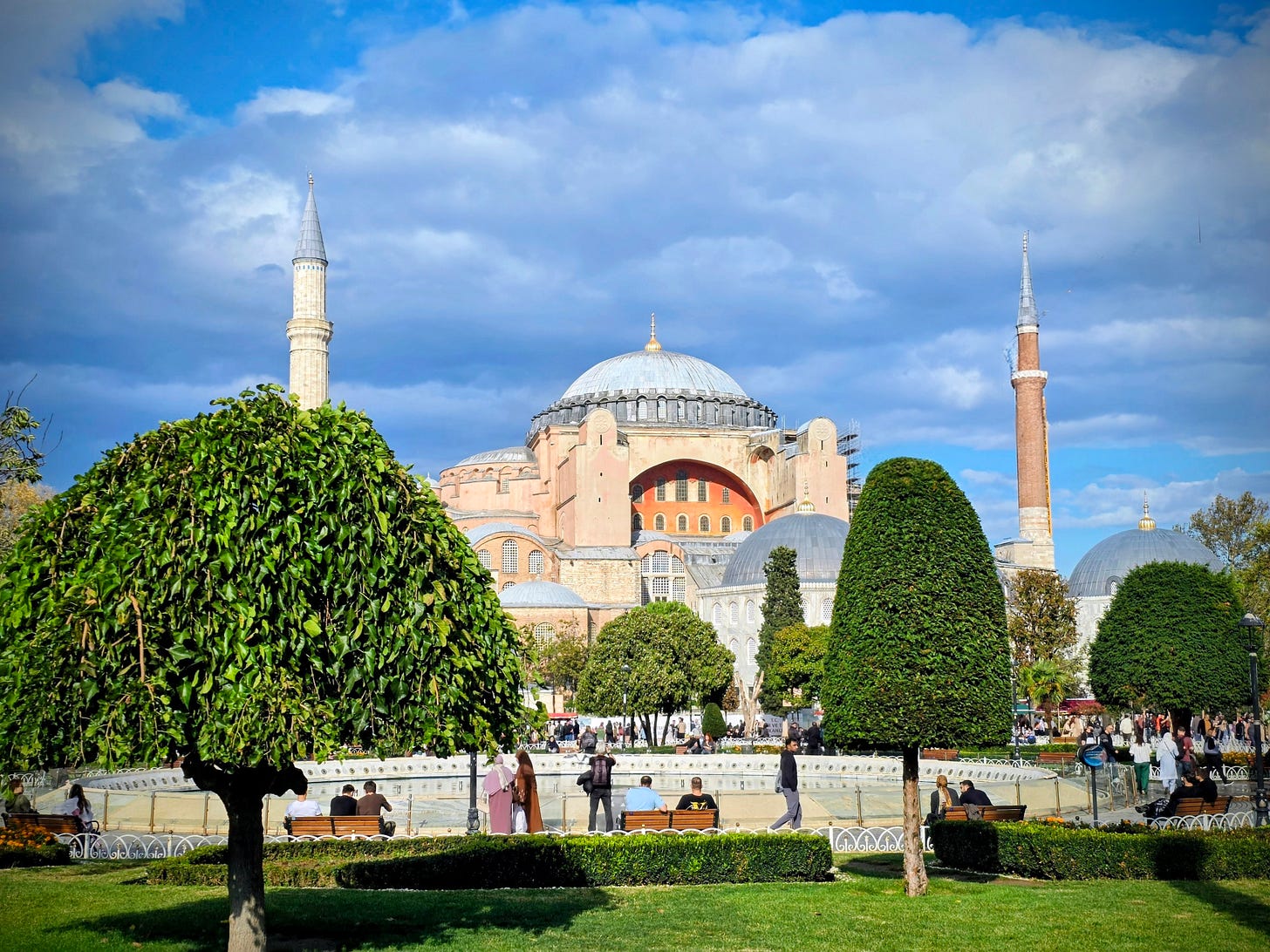

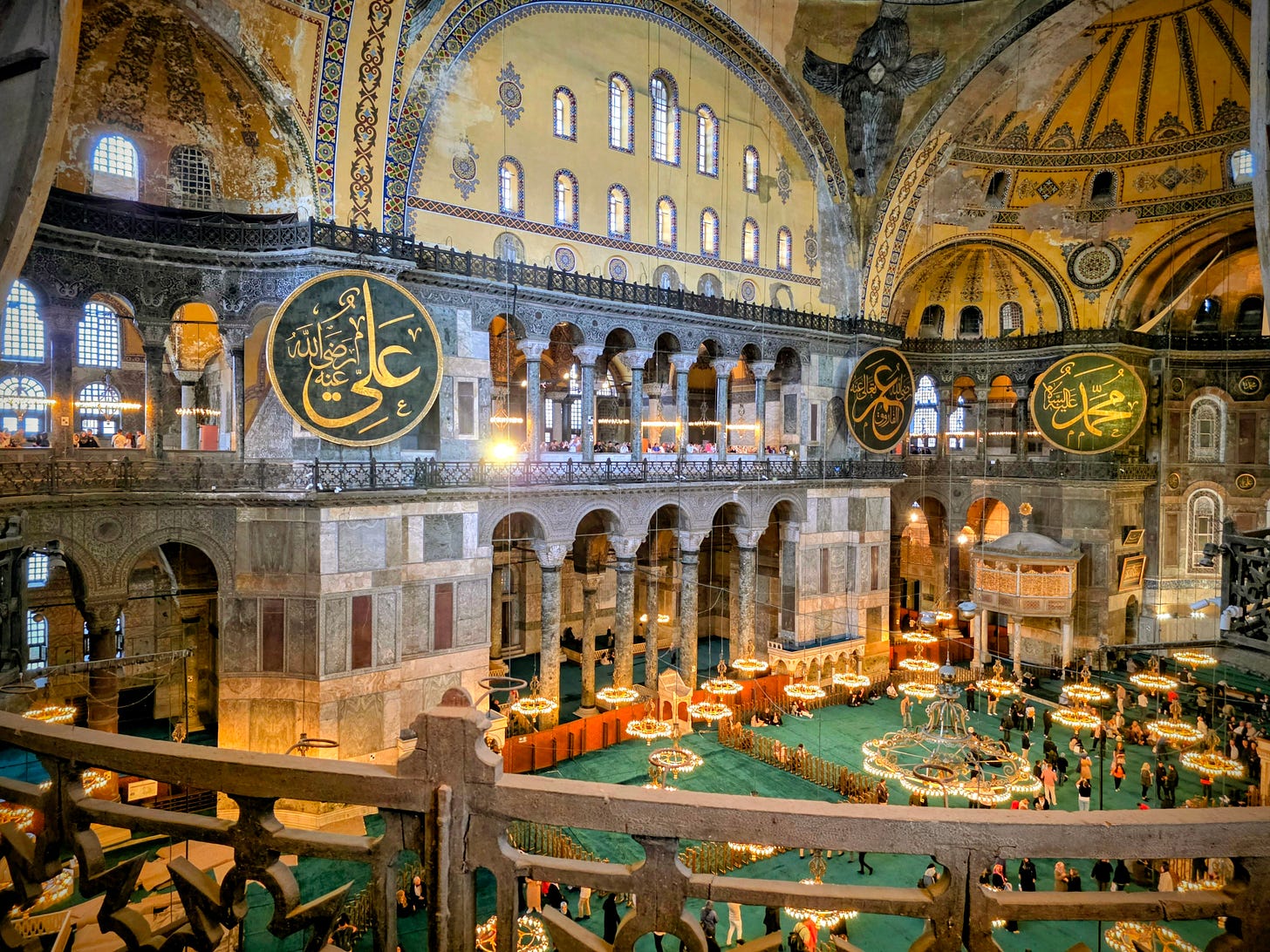
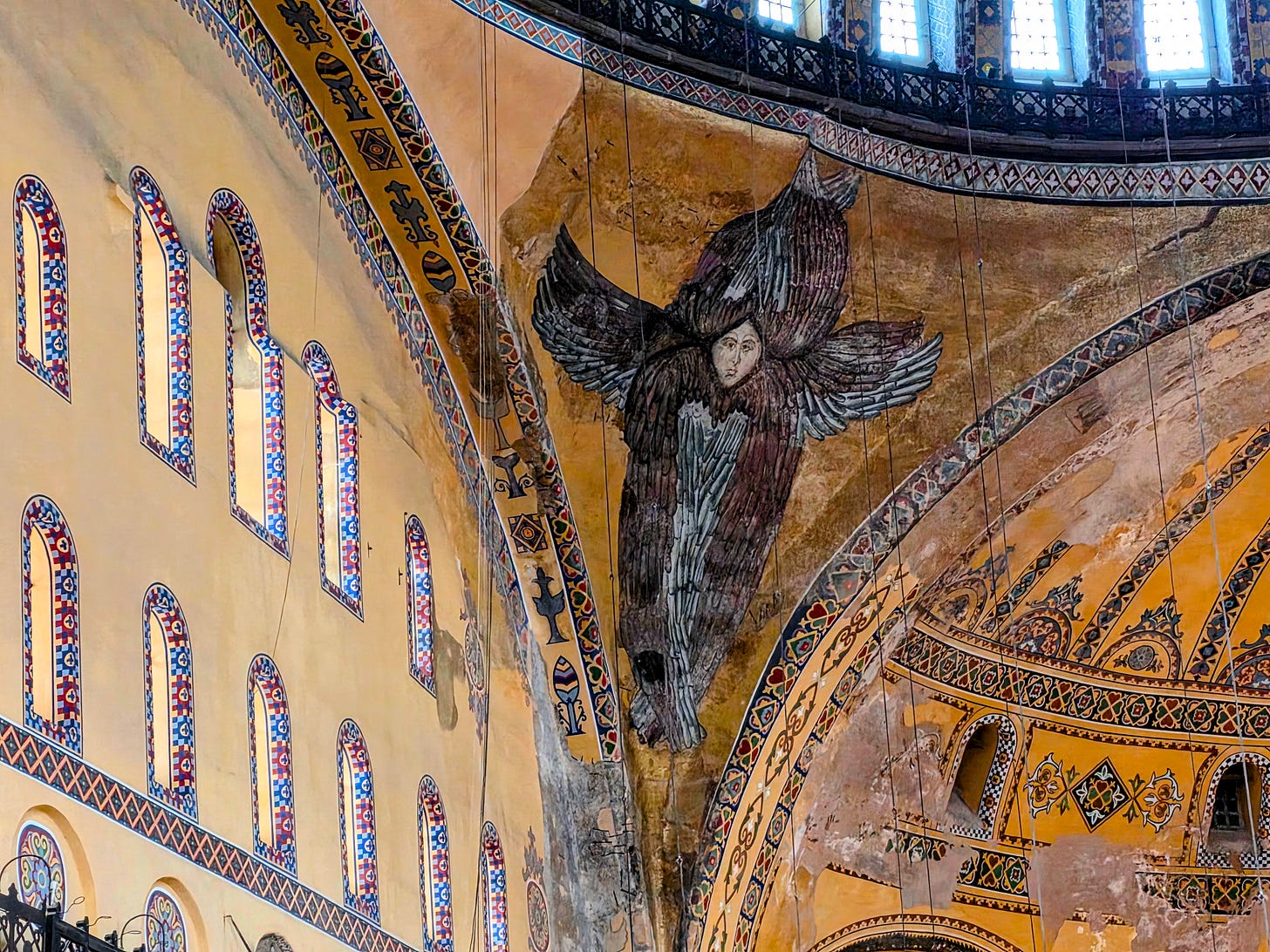
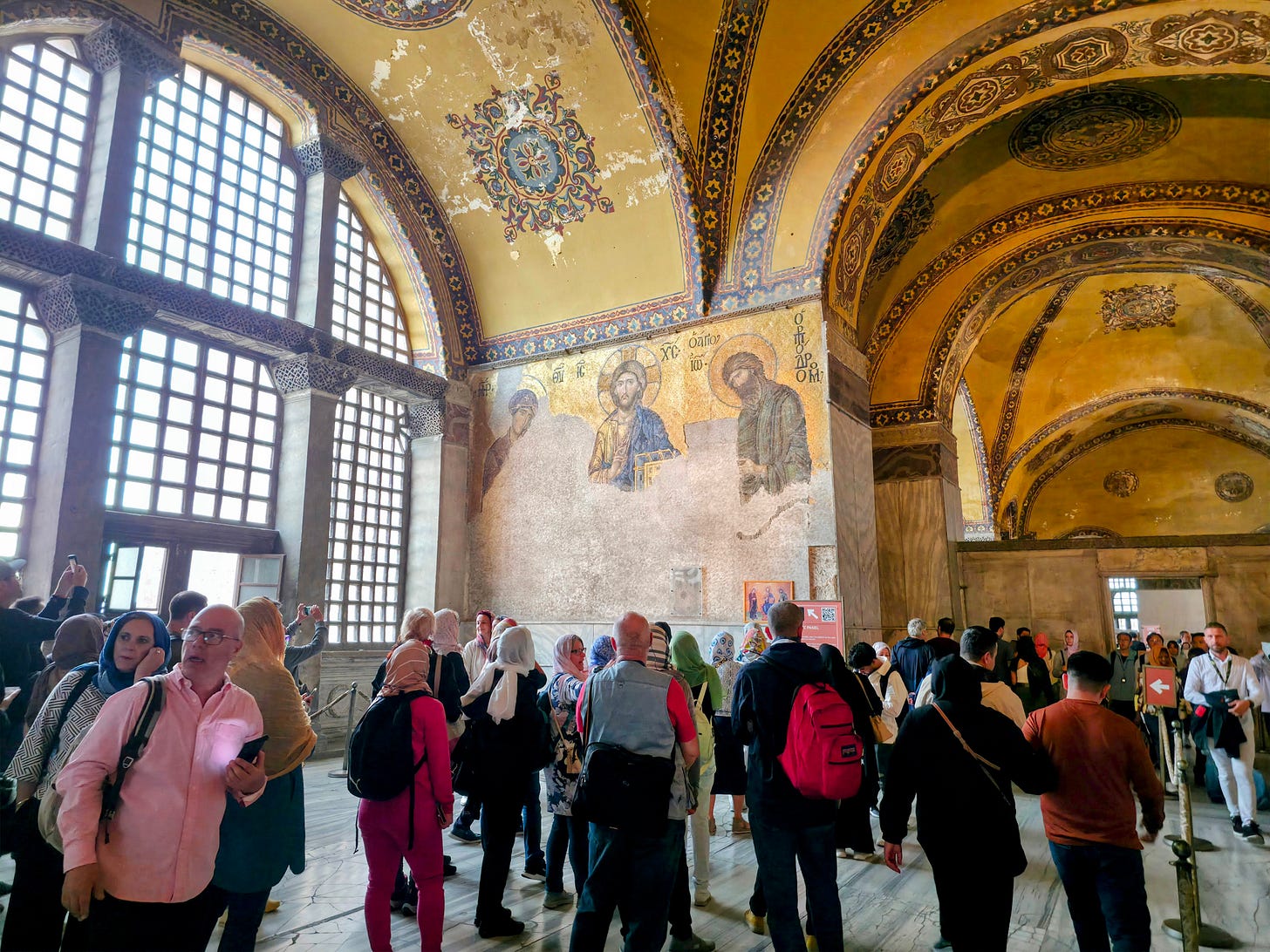
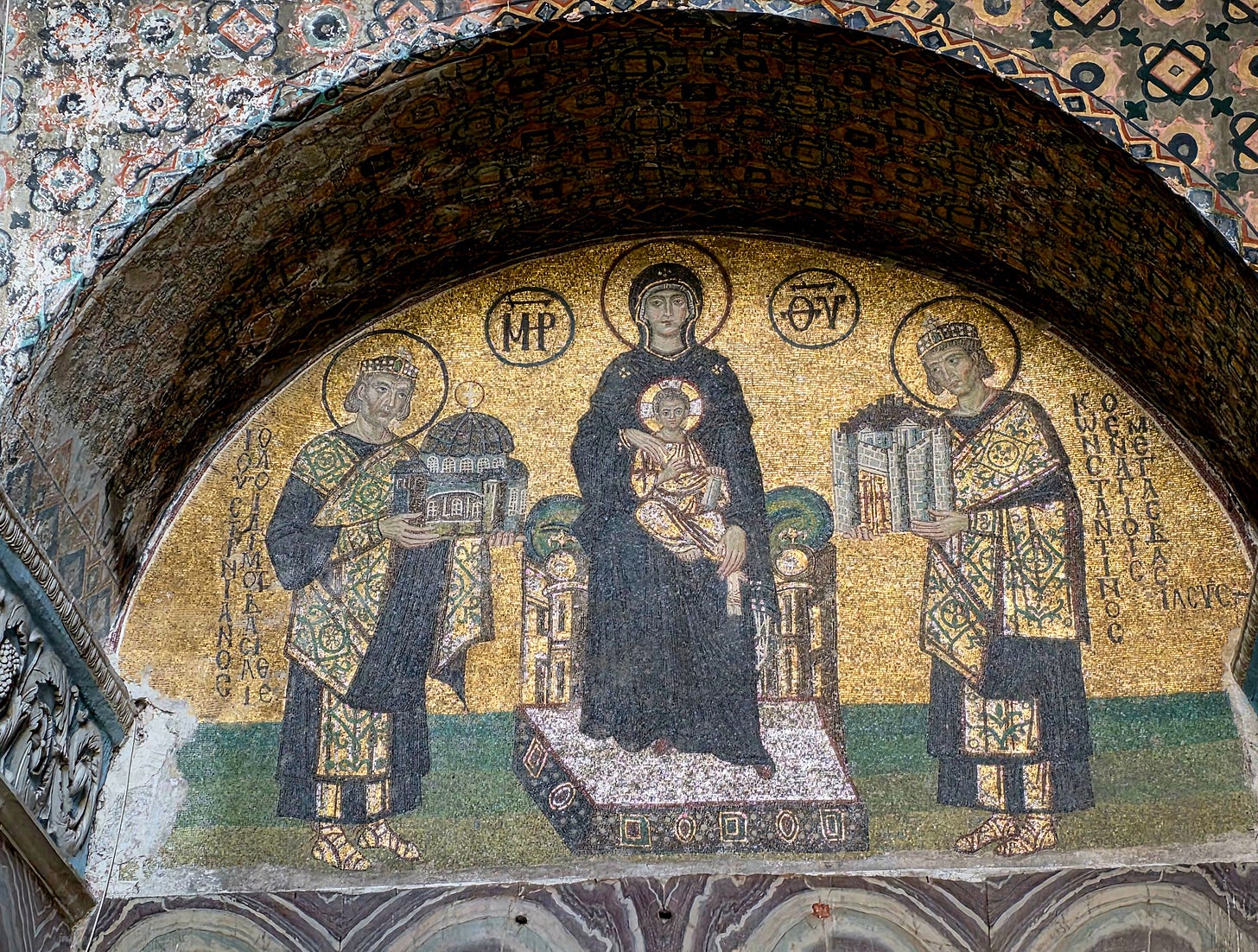
Well said, Daniel. I had similar mixed feelings recently as I toured Westminster Abbey and reveled in the glorious hymns of Evensong at St. Paul's Cathedral in London. In the history of Christian nationalism, the churches of the United States are rather late to the trough of power-thirsty theology. As far as I can tell, it is one heresy no inquisition or reformation movement has ever tried to eradicate.
Very interesting. A lot of it jibes with my feelings about Christian Nationalism. I’m a Christian and have no mixed feelings. I strongly disagree. I don’t believe the Gospels are followed.